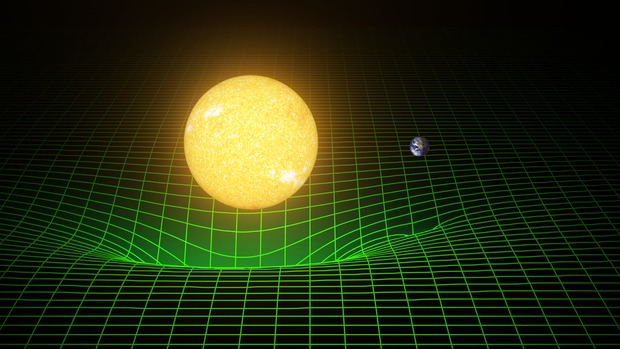Einstein’s last theory proven
Gravitational waves declared a reality
An artist’s rendition of an object’s mass on the fabric space-time.
February 17, 2016
Just 4 months after the 100th anniversary of Albert Einstein’s general theory of relativity, scientists at Laser Interferometer Gravitational-Wave Observatory (LIGO) made an announcement last week that shook the physics community at its core – gravitational waves exist, and there is proof.
Gravitational waves can be explained though Einstein’s theory, where in which space and time can be measured together in something called space-time. It’s easier to understand if we think of space-time as a fabric, that can be manipulated and warped, impacted by gravity. The heaviest objects placed on the fabric creates the most warpage, and when they move, they create “ripples” that expand outwards.
When proposed back in 1916, Einstein thought gravitational waves could never actually be proven; humanity would never have the right kind of technology to detect them. It became the last unproven part of Einstein’s theory, until Feb. 11, when scientists at LIGO announced they had recorded the sound of gravitational waves caused by two massive black holes colliding. These black holes were 1.3 billion light years away from Earth, both 30 times the mass of the sun. Not only does this prove the accepted suspicion that black holes really exist, but it also confirms that black holes can merge into even bigger black holes.
The black holes’ gravitational waves passed through 1.3 billion light years of galaxies until they finally reached Earth. The effect of gravitational waves is a very small distortion. Stretching and squeezing everything that they pass though at a microscopic level. To detect them, scientists built LIGO, the most sensitive measuring device ever made. LIGO has two detector sites, one in Washington, and another in Louisiana. Both use an interferometer, which measures the smallest displacements in space, using mirrors and lasers. The displacements themselves are so small that the device can detect distortions as tiny as 1,000th the diameter of a hydrogen atom’s protons.
Finding gravitational waves isn’t a one-stop achievement. Using the technology we have now, and the new kinds we will achieve in the future, gravitational waves will open a whole new world for scientists. Questions like how quickly the universe is expanding or how much dark energy is in the universe, can be answered with unprecedented precision.
Until now, scientists have only been able to discover the universe with their eyes, selective to what emits any kind of light; but not everything does. More often, they have gravity, and thus, are capable of producing gravitational waves. “Seeing” invisible objects just became a reality.
























